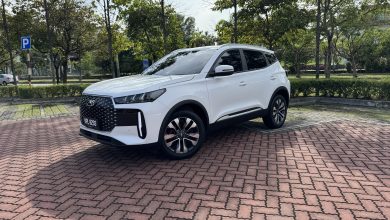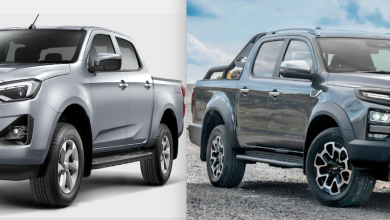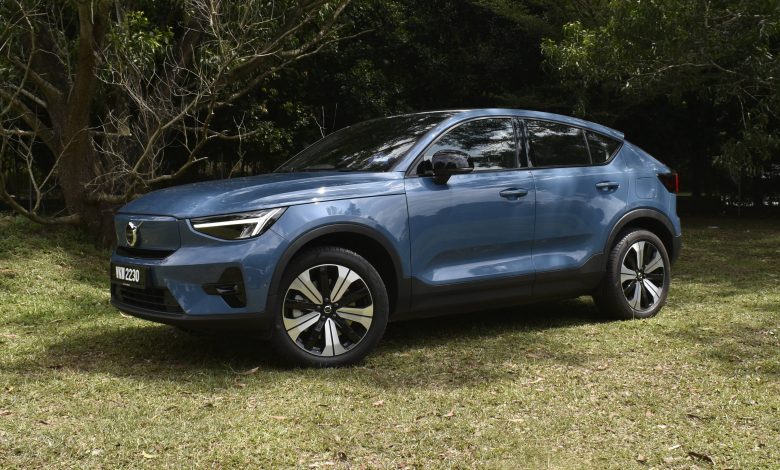
If its Scandinavian cool doesn’t sway you, this Volvo C40’s rocket-ship performance certainly would.
There has certainly been a paradigm shift in the local industry lately, with once-established brands now facing immense competition from hotshot newcomers. And this is perfectly exemplified by what is currently playing out in the entry-level premium EV segment, with both the newly locally launched Tesla Model 3 and smart #1 honestly blowing both the established BMW iX1 and Mercedes-Benz EQA out of the water in basically every comparable category.
Though while the Germans may still struggle to have a half-decent answer to these new arrivals in town however, there is nevertheless at least one established premium marque over here that can take the fight to these new EV disruptors — Volvo.
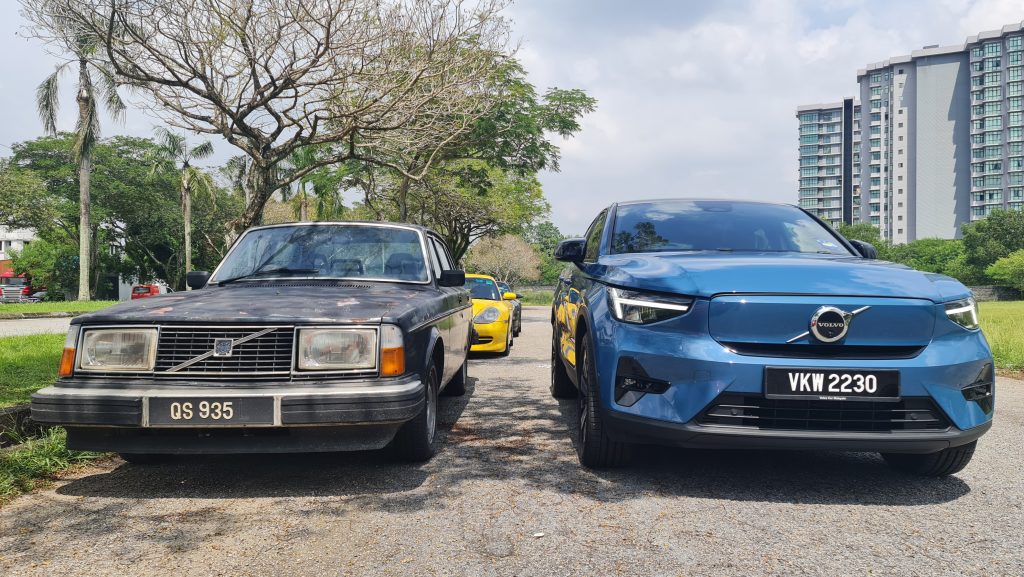
A brand that has long been in the shadows of the big three German luxury marques, Volvo has indeed recently come into its own in by taking an early leap into the EV space. And thus while the all-electric XC40 and C40 Recharge may be admittedly a healthy RM 40k – RM 60k (depending on spec) over the Model 3 or #1, having lived with the latter SUV-Coupe version for a few days now, I am happy to report for there to be at least a few highlights with this chic Swede alternative that might just convince buyers (who could afford it at least) to part with that extra dough.
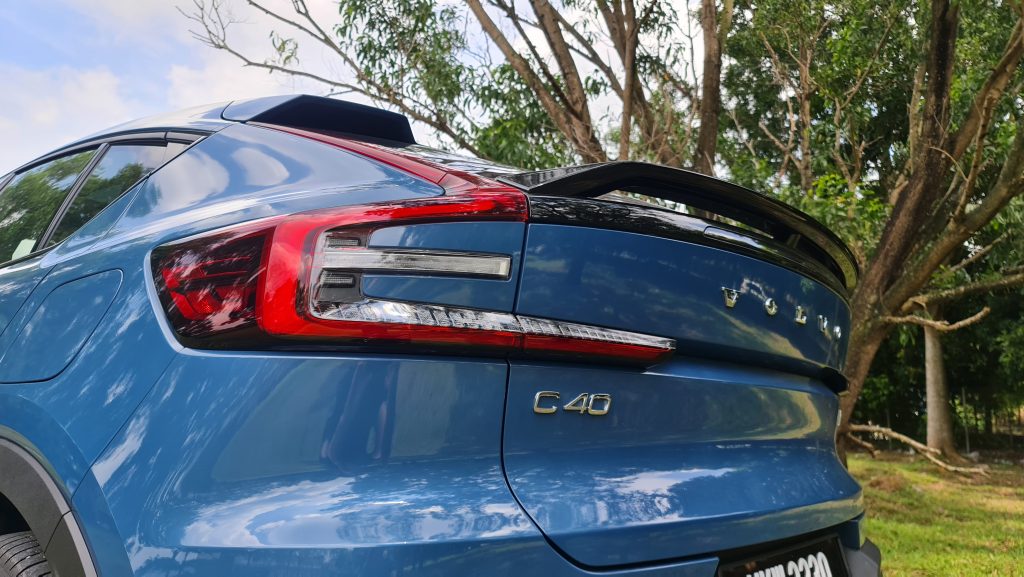
Fantastically Fast
And kicking things off with perhaps the most obviously EV-centric highlight with this C40 first, the sole twin-motor variant on offer locally is, to put it in the most PC way possible here, fantastically fast. Fully mashing the go pedal for even just the briefest of moments in this supposedly sensible Volvo and you’ll be finding yourself pressed deep into the seat, whilst its speedo reads deep into the triple digits.
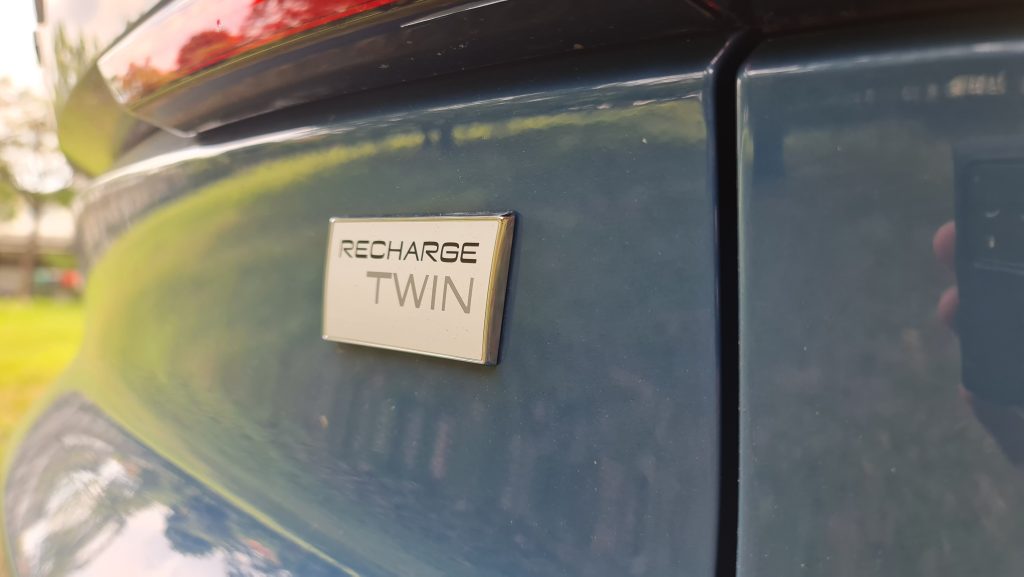
408 hp and 660 Nm of torque is essentially equivalent to what supercars of the early naughties were outputting after all. And while admittedly the Model 3 and #1 (especially in their Long Range and BRABUS forms respectively at least) may best the Volvo in the game of century sprint top trumps, the C40’s 4.7-second quoted 0-100 km/h time would still nevertheless whoop anything this side of a Porsche 911 at the traffic light grand prix.
What more is that in world outside of standing sprints, it could actually be reasonably argued that this Volvo is to be the fastest of the three. And that is not least because thanks to it having the greatest torque figure at 660 Nm, the C40 is basically the one with the greatest get-up-and-go in this already speedy group; but with the C40 also offering the tallest seating position among the three as well, this high-riding Scandinavian SUV-coupe hence provides the best view ahead for its drivers to confidently mash the throttle whenever the red mist descends.

Remarkably Refined
Aside from being ludicrously fast, another EV-centric highlight with the C40 is for it to be predictably refined too.
The typically expected all-electric silent driving experience for instance is made all the more so by the distinct lack of any other wind, road and even rain noise with this Volvo.
And interestingly enough, its somewhat inert steering feel (which is usually a complaint that will be flagged for other cars) is actually to be a positive on the C40. Such is as Volvo has somehow managed to make it weighty enough for drivers to always feel confident in utilising its full (explosive) power potential, while simultaneously tuning it to be just dead enough such that the major road imperfections are not transmitted through the wheel.
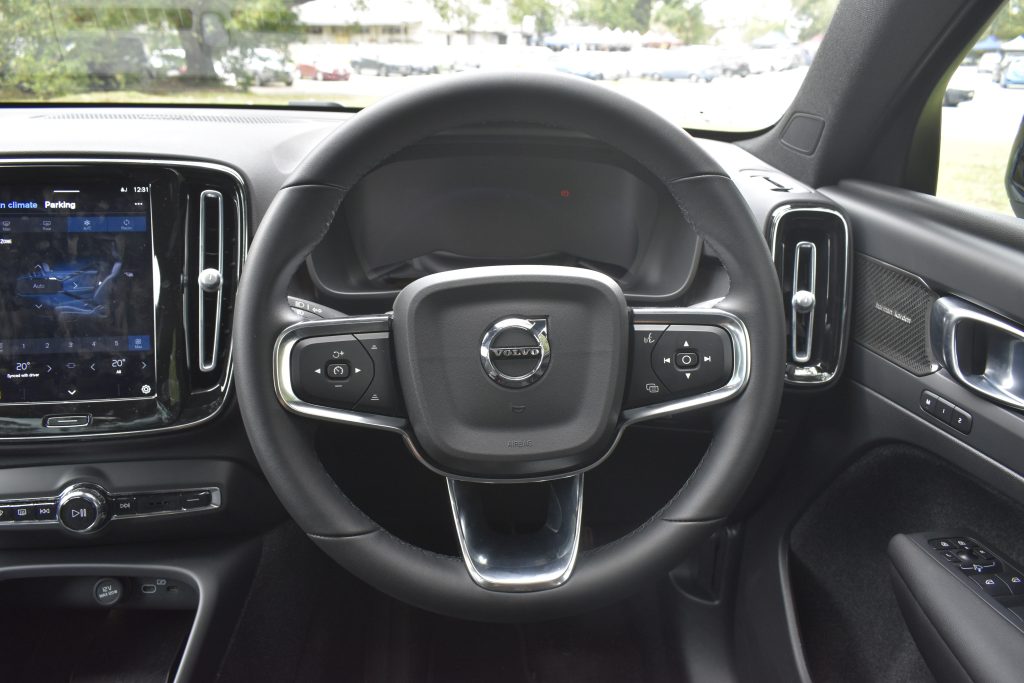
Unfortunately however, while the hands may not feel the bumps in the road, said imperfections are instead to be felt through the arse in this Volvo. That is as likely thanks to its high ride height and weighty batteries, the C40 does feature some rather stiff suspension.
Handily though being a Volvo, its seats are no less than supremely comfortable (with slide-out thigh bolsters a boon for the longer-legged up front). The refined driving experience is further helped along too by the expectedly fantastic adaptive cruise control system, which is remarkably gentle on the brakes to the point where it could potentially be better than the human at the wheel in offering the smoothest drive possible.
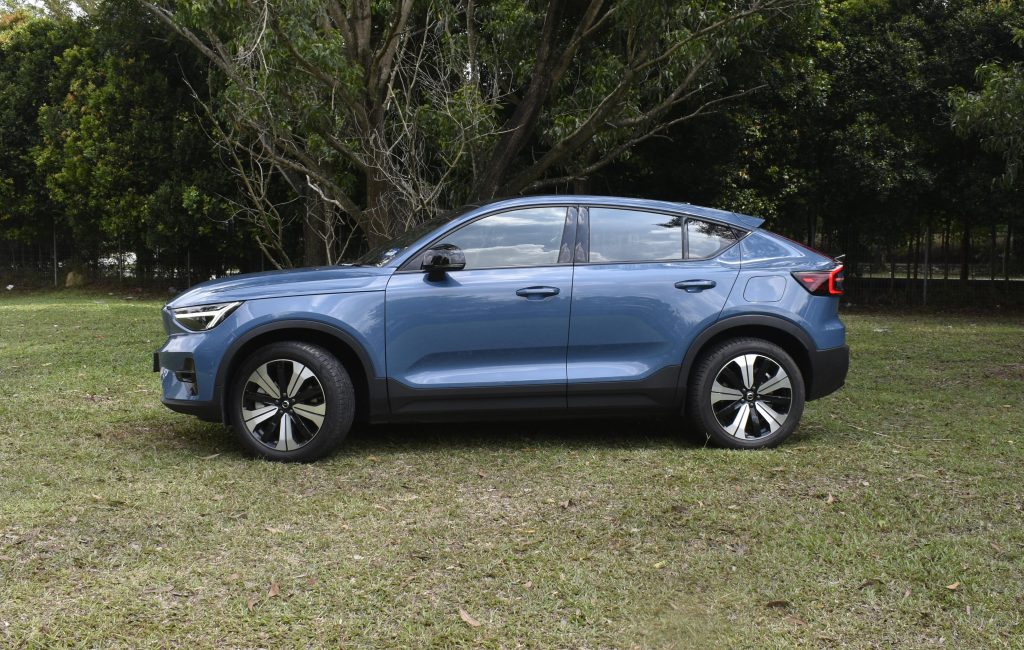
Pleasantly Practical
Another plus point of this Volvo is that in spite of it being the smallest model in the Malaysian right now, there is still to be more than sufficient space for four (or even 5 if they weren’t too wide) within this C40. And rather surprisingly for a SUV-coupe, said 4 or 5 could be as tall as they like, as in spite of appearances, its sloping roofline only begins aft from the rear seats. This in turn means headroom back there is therefore surprisingly decent even for six footers, with the slight recline to its rear seats certainly helping matters in this aspect too.

Moreover, while perhaps not being as competent in the cargo carrying aspect relative to its iconic estate counterparts, the C40 still has sufficient boot space for anyone’s daily use case. The inclusion of a decent-sized (30-litre) frunk in spite of its twin motors does come in handy to store its charging cables and other bits of random tat that is nice to have in a car but not necessarily used often, while its adequate 413-litre boot is made that little bit more practical by Volvo’s fold up boot divider/bag hook thing.

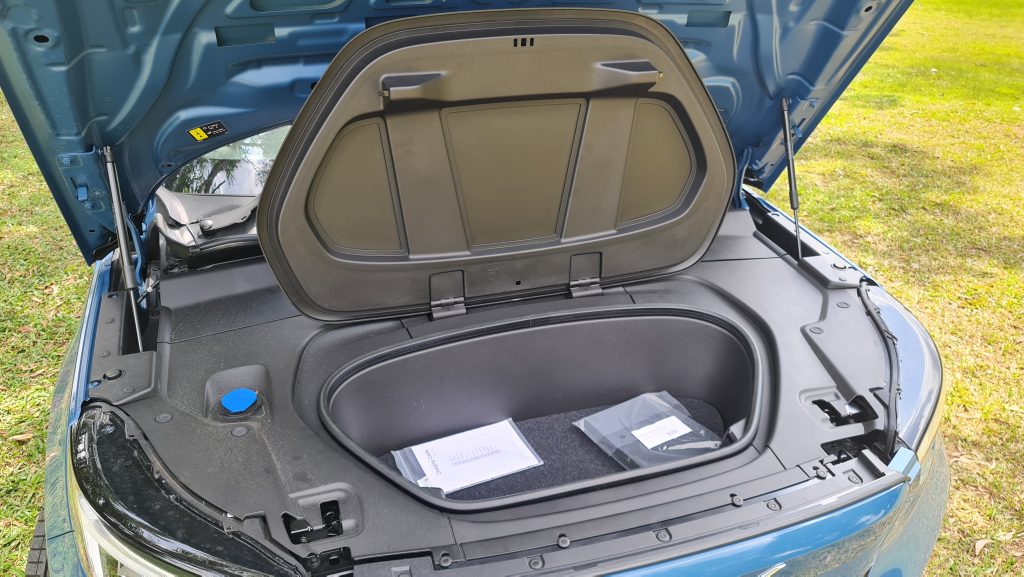
Scandinavian Stylishness
One of the biggest reasons for choosing the Volvo however is also perhaps the most subjective highlight with it, as it stems from how the C40 just oozes Scandinavian chic with its overall design.
Now understanding that design is of course in the eye of the beholder, I shall cut short my very lengthy notes on why I personally adore this Volvo’s aesthetics to instead just say here that the C40 is actually already a 3 year old design (or even older in fact, if you consider the XC40 launched in 2017).

Also, just because I couldn’t resist, why more cars don’t feature this Volvo’s fantastically cool Topography Decor dash and door panel inserts (that lights up in a warm white when dark out) in place of boring piano black plastic items is beyond me…
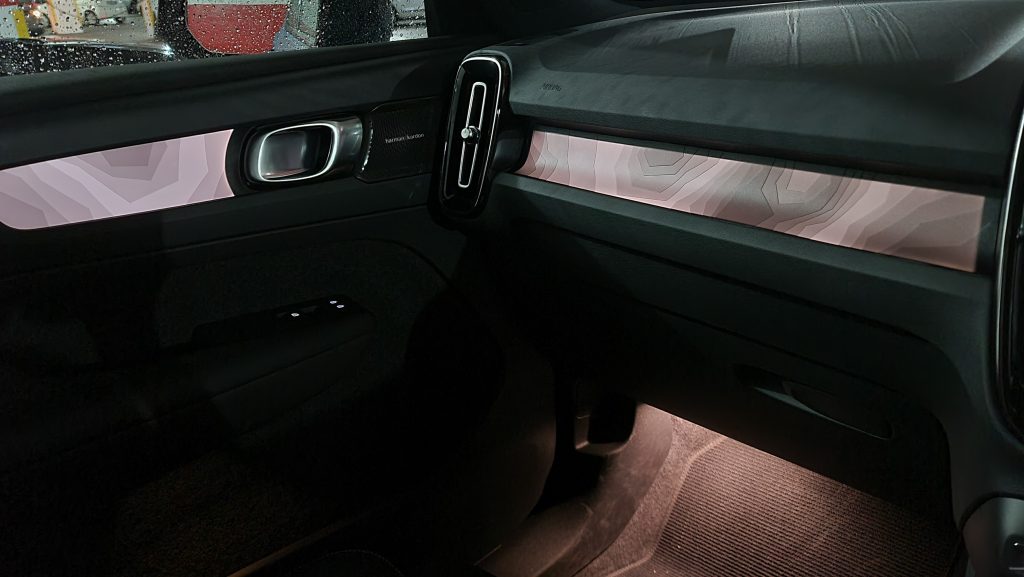
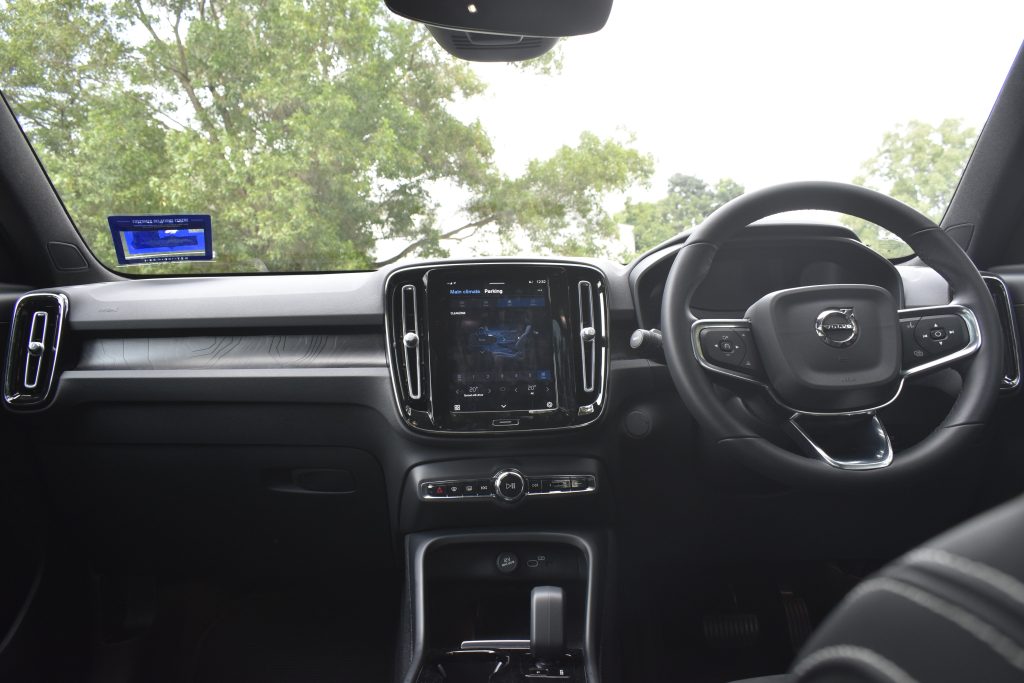
A First Class Sound System
Though while its ludicrous acceleration and overall Scandinavian charm are certainly the main high points I will bring up when people ask for my opinion with this Volvo, my personal most favourite aspect however on this C40 was simply its 14-speaker 600 W Harman Kardon surround sound system.
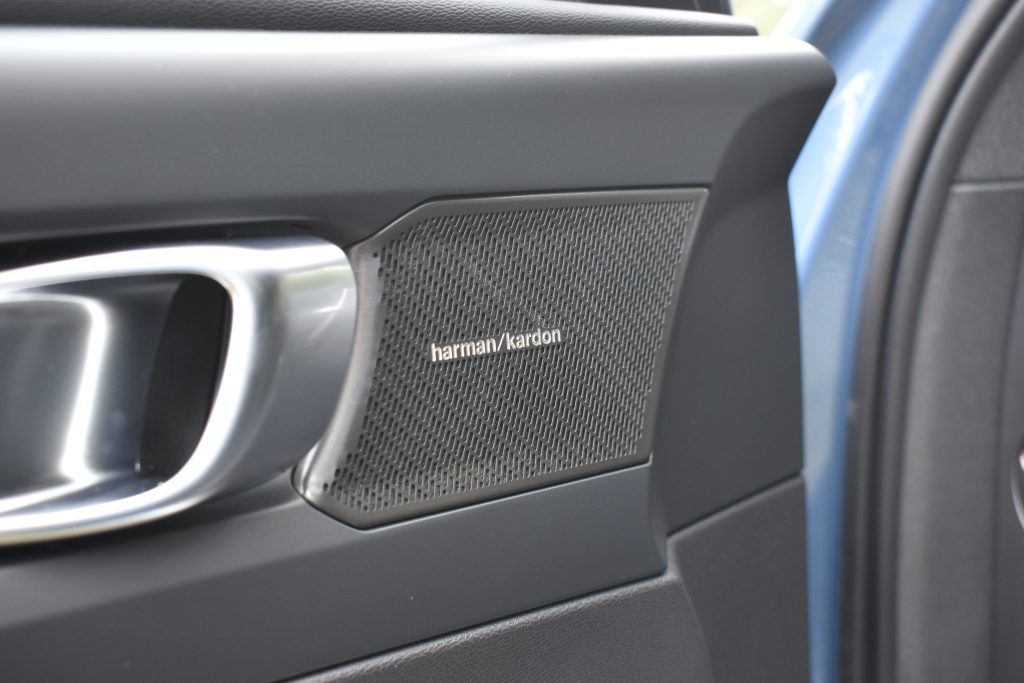
To say it is amazing is potentially grossly underselling it, as the auditory experience I had with this audio system in this Volvo is no joke (when set to the surround sound setting) almost exactly like what one would hear in a live concert. In fact, it came to a point that I was listening to exclusively high-quality live recordings of my favourite music throughout my time with the car, and actually spent one time just jamming to a concert recording while waiting for its batteries to be topped up.

As For The Not So Good Bits…
For a company that has built its image on sensible-ness, Volvo has however made some rather major missteps in terms of ergonomic design. And one of the most safety-centric faux pas with this swoopy C40 SUV-coupe is for its steeply raked and tiny rear window to be beyond useless for actually seeing what is behind the vehicle.
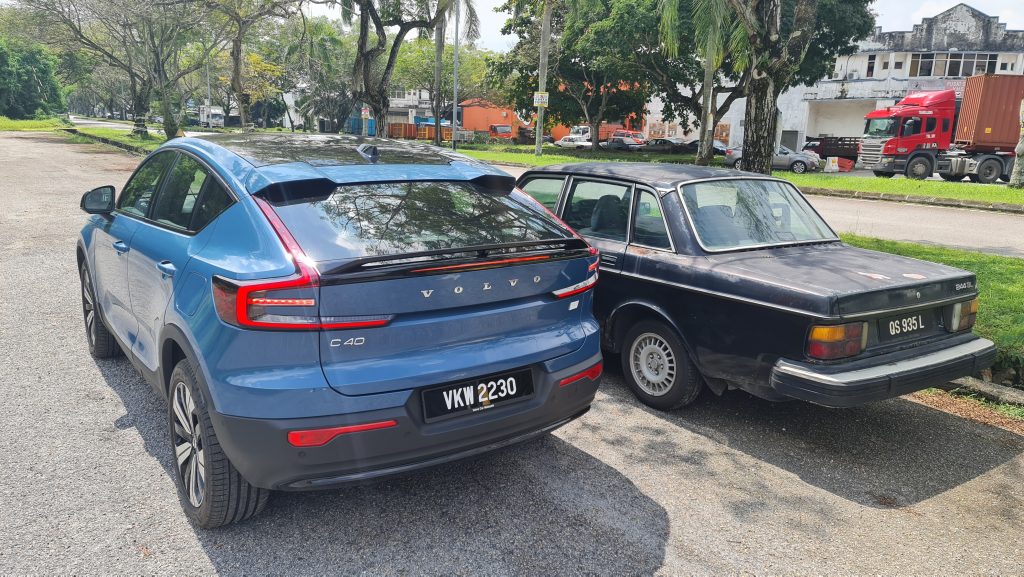
Moreover, while there is too little glass out back, there is instead too much glass up top. Such is because Volvo, in their infinite wisdom, had decided that a fixed panoramic glass roof with no physical shade is a great idea in Malaysia.
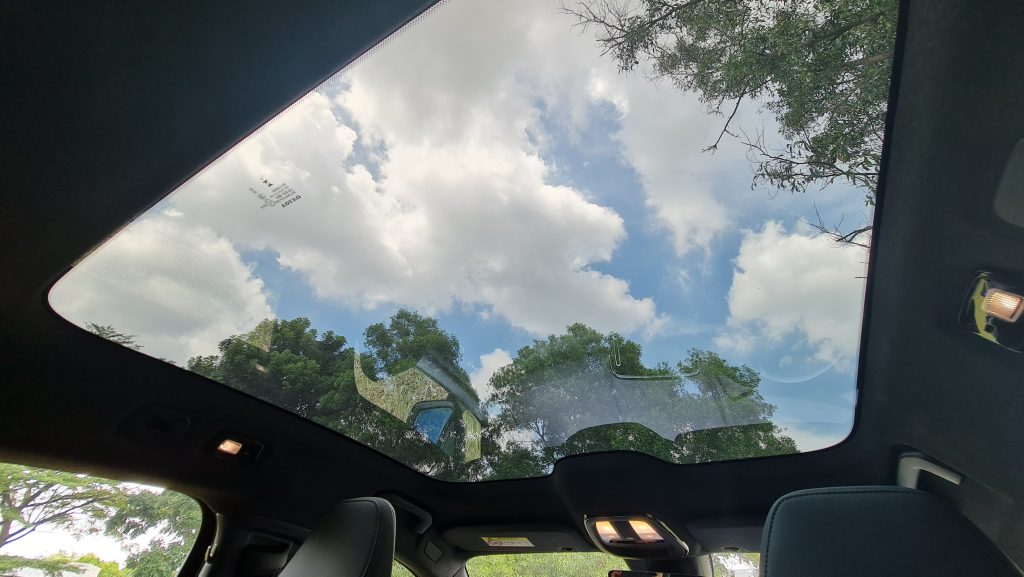
And also, in what is perhaps the most Malaysian complaint ever, the C40’s air conditioning isn’t exactly what anyone would call icy cold. Even with the fan speed going full blast, it is comparable to only perhaps Proton’s medium setting.
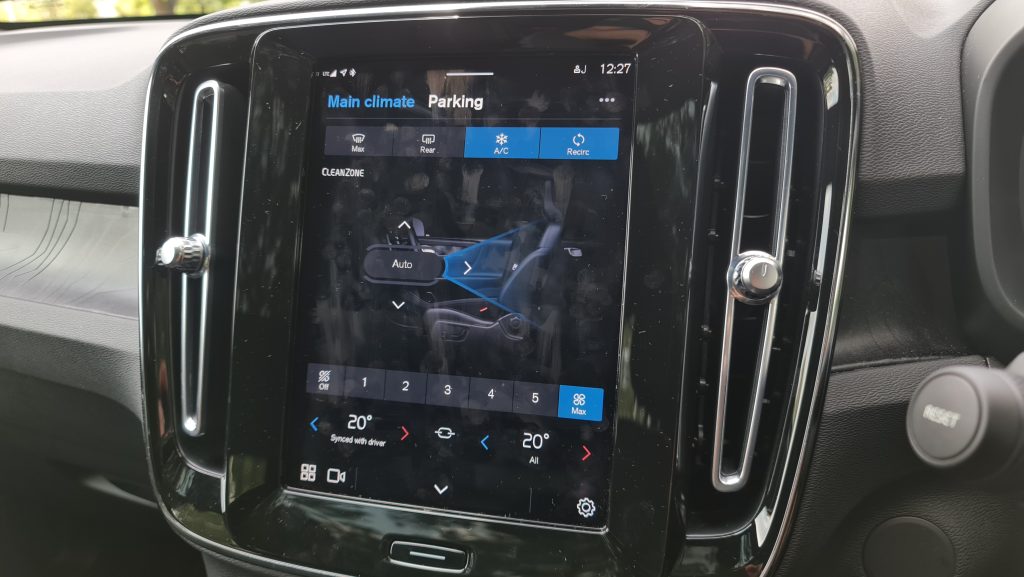
Though even a tiny rear window and the requirement of sunglasses while driving in the day is not to be my biggest gripe with this C40, as that honour instead goes to a tech feature that Volvo has incidentally been promoting the most with this car — its Android-based infotainment system.
Oh, The Infotainment…
Now for those unfamiliar, Volvo has (presumably at great expense) partnered with Google to develop this Android-based infotainment system. And in theory at least, having one of the tech giants who runs the world’s most used mobile operating system would be better off than having its own in-house developers working on it, especially when the Swedish automaker doesn’t have a good track record at infotainment systems in the first place anyway.
Unfortunately, when it comes to using it however, my personal experience with this Android infotainment had on more than one occasion wishing that it was instead just the plain Jane Android Auto. And just as an aside too, this Google system funnily enough only offers the option of Apple CarPlay integration.
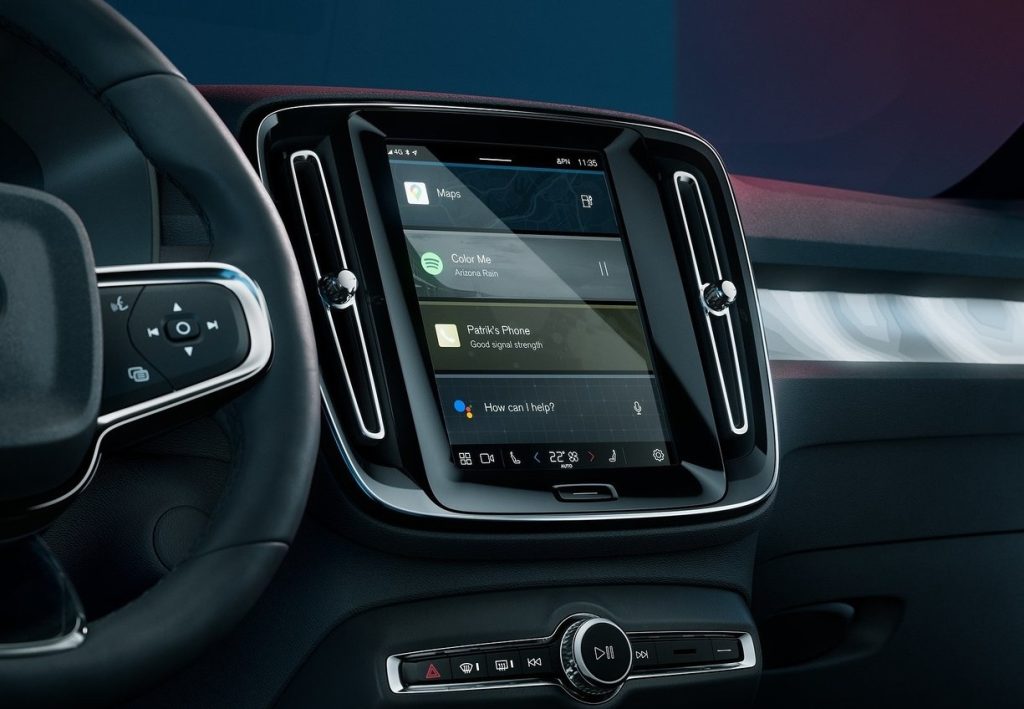
In trying to explain my frustration with this infotainment system, my main complaint with it stems primarily from it essentially being a distinct entity from one’s Android phone. Now this of course does have its benefits of leaving your own phone free from its Android Auto tether while driving, but the flip-side is that with this infotainment system being a separate device, there is also no longer proper seamless (and that’s the keyword here) integration between the apps on one’s phone and the car.
So say one has the Google Maps location set on the phone, it doesn’t always automatically register with the Google Maps on the car, despite being logged onto the same account. Same goes with Spotify too, as the playlist that running on one’s phone will not be seamlessly linked to continue playing in the car alá Android Auto, which becomes a bigger PITA when the infotainment system app doesn’t actually feature the same simple UI as the mobile app (with its easy to see green play button that just starts the playlist).
Another annoying quirk meanwhile with this infotainment setup is that Google Maps only shows navigation directions on the instrument cluster, while the central screen instead displays a general map overview instead, which is not the best if the driver wishes for the passengers to double check their direction. Say too if you perhaps prefer using Waze instead, the navigation directions is then solely on the central screen, with instrument cluster only displaying the written direction on the top row of what has become a predominantly blank screen.
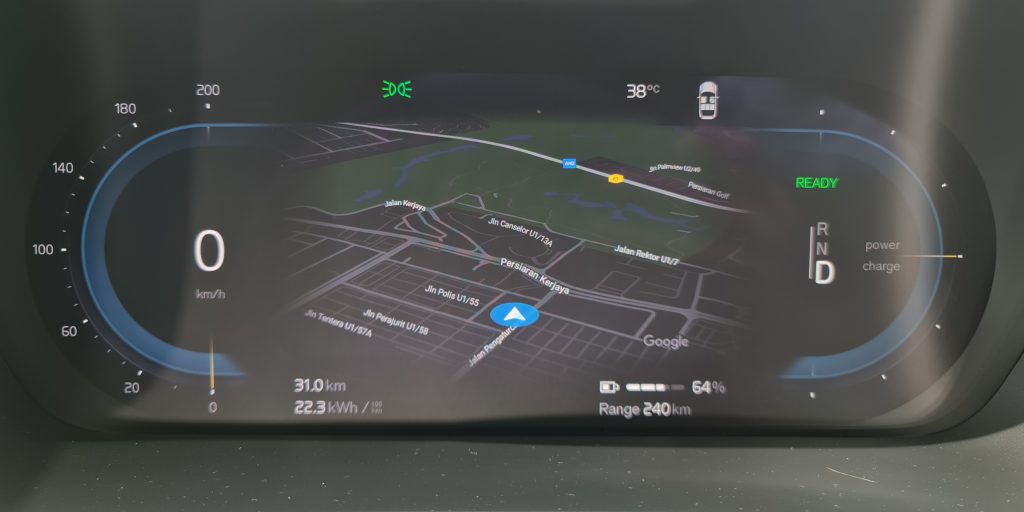
Also, this is probably more of a product from my short two-day only test with the car than fault of the car itself, but the Swedish minimalism incorporated into this Volvo does leave a few unmarked and simplified icons on the steering wheel, which took more than a while to decipher as to its exact function is.
Summary
Admittedly now however, most of the aforementioned infotainment-related complaints mentioned above can be easily fixed by software updates that Volvo will inevitably introduce at a later date. What more is that the other minor niggles too is not exactly a deal-breaker, with the more sensible XC40 also being available for those who are willing to trade some style for a retractable sunshade and a usable rear window.

And as to why pay the decent chunk of change more for the C40 or XC40 over the smart or Tesla. Well, if the above reasons provided aren’t good enough, just remember too that this premium Scandinavian marque will likely offer a premium sales and aftersales experience to maintain its premium perception. Let’s just say as well that while the two new EV hotshots are the flavour of the month right now, telling everyone that you’re driving a Volvo does still somehow has a nicer ring to it, right?
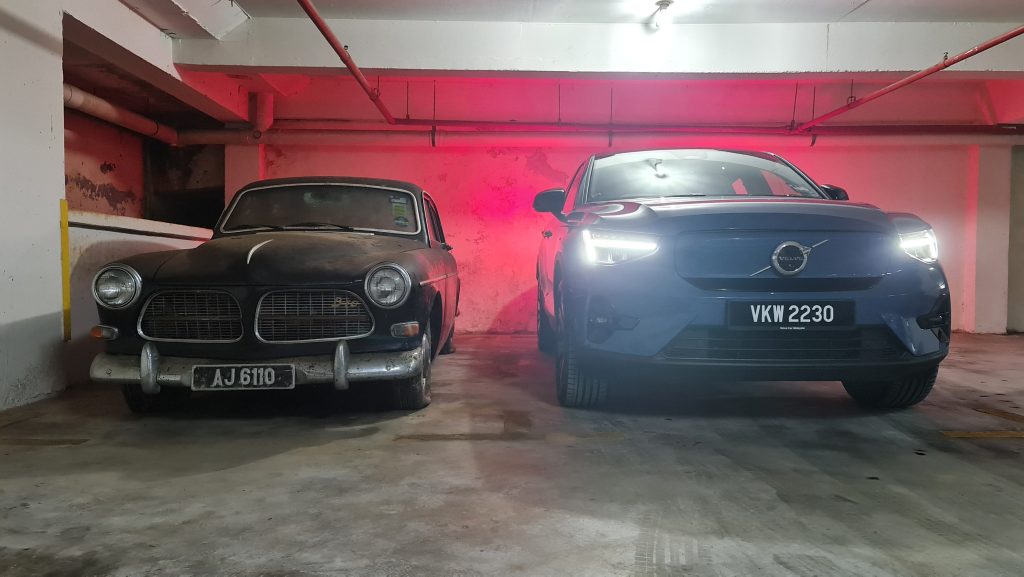
Odds & Ends
- The C40’s surround view camera has a wide angle, which is good to see far out into the surroundings of the Volvo. What is not so good however is that it is rather fish-eyed, which means it is actually not the easiest to gauge with it in extremely tight spaces.

- As is the trend with EVs these days, the C40 has no start-stop button. And while being able to just walk out of the car was disconcerting for the first few occasions, it was surprising even to me how fast I got used to jumping in and setting off. There is a downside though to this lack of purposeful ignition switch, and that is where if the driver gets out for whatever reason with passengers being left in the car, they would start to roast pretty quickly as the air-conditioning will have shut off.
- Contrary to most cruise control systems, a short press on the speed setting button on the C40 is for a large increment change, while longer presses are used for smaller adjustments.
- In the spirit of consumer testing, charging the C40 from a conventional 3 pin plug yield an average increase in battery percentage of 2% per hour of charge.

- Volvo has very handily integrated its one touch headrest fold into the C40, but while it does fold down by the press of a button, it can’t be popped back up the same way…
- Like a proper SUV, the Volvo C40 has doors that cover the entirety of its sills. So no dirty shins while exiting the vehicle!
- There were no rear grab handles in the C40, which was brought to my attention after my rear passengers complained about having nothing to really grab onto if the driver decided to properly punt this monstrously fast EV.
- Complaining a little bit more about the infotainment system here too, the built-in Google Maps EV charger finder is nigh-on useless, with the two attempts I had tried it out leading me to an empty lot and an EV charger showroom respectively. There was also the occasion where Google Maps had hung while trying to search for GPS, which necessitated a hard reboot (long press physical home button right below the iPad-esque screen).
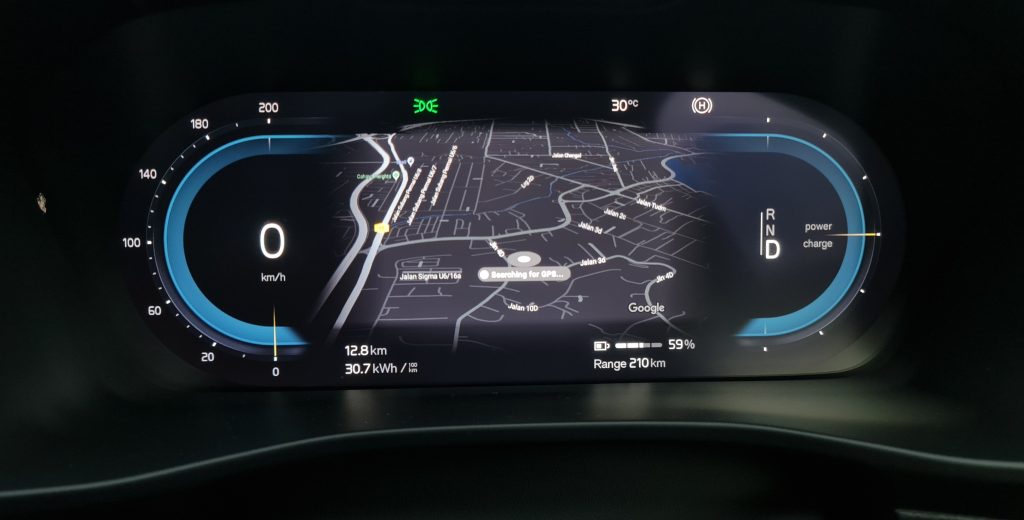
- The Volvo C40 shares the same stalks as the Proton X90.
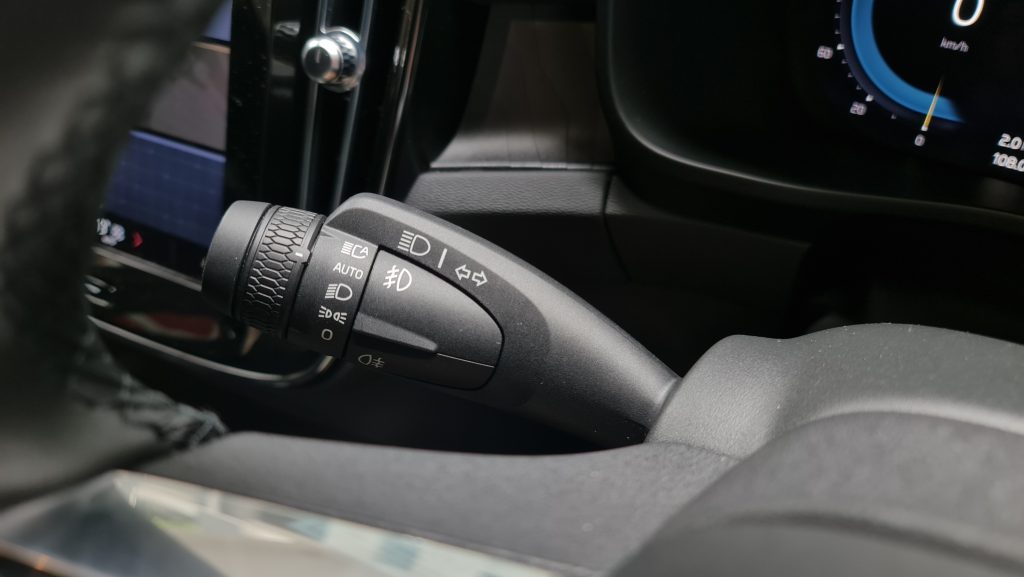
Volvo C40 Recharge Pure Electric Technical Specifications
Motors: Dual Permanent Magnet Synchronous Motor (AWD)
Max Power: 408 hp
Max Torque: 660 Nm
Top Speed: 180 km/h
0-100 km/h: 4.7 seconds
Battery Capacity: 78 kWh (75 kWh usable)
Range: 450 km
Charging Speed: 150 kWh DC (10-80% in 28 minutes), 11 kW AC (7.5 hours from 0-100%)
Electric Energy Consumption: 21 kW/100 km
Price: RM 288,408 (RM 16,000 cash rebate available at time of publication)



